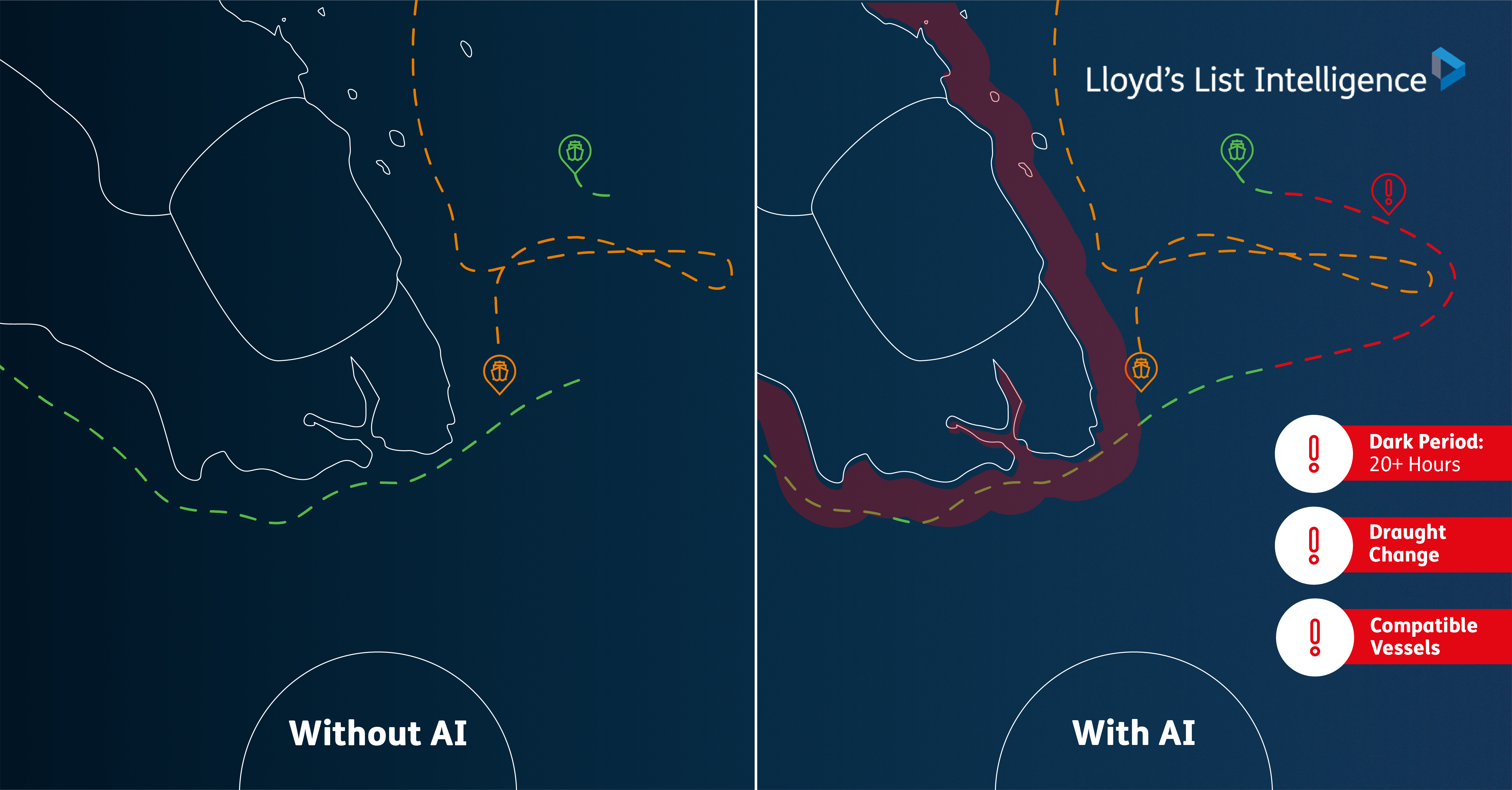The constantly moving and changing maritime industry needs data and insight that evolves. That’s why we teamed up with SAS, leading innovators in artificial intelligence. Since we’ve integrated machine learning into our powerful historical and real-time database, new and more advanced insight about vessel and fleet behaviour has emerged.
Our deeper analytical insight can help our customers better anticipate the activities of just one vessel of interest or trends across the entire global fleet. Risks are more transparent, opportunities are clarified, and efficiencies are identifiable so that decisions can be made soonest.
What we learned from our customers
Professionals across shipping, insurance, finance and law have been telling us about the difficulties and complexities they face when identifying and assessing potential risk.
The pressure on businesses to comply with OFAC and other guidelines and legislation is ever-increasing. They need to find the best possible expertise to help them avoid any risk identification failures, or mis-identifications, and the monetary and reputational damage to their businesses that can happen as a result.
The sanction-skirters are constantly changing their tactics to avoid detection. They seem to be able to keep pace with advancing technology, inventing new ways to conceal their activities and make them appear to be normal.
Having increasingly sensitive risk models is not the answer to the problem. This could create false positives that absorb time and effort. Smarter models that bring fewer false positives is what’s needed.
The solutions we’re developing
We have an expertly managed maritime database, which contains billions of data points that are constantly verified and turned into actionable analytics. But to respond to our customers’ need for that higher level of insight, we needed to pose some question:
Wouldn’t it be great if probable dark port callings could be calculated and highlighted automatically?
Wouldn’t it be great if probable dark ship-to-ship transfers were easier to identify and differentiate from simple AIS malfunctions?
Wouldn’t it be great if there were more context around events like loitering so that it’s easier to see what might have happened during these abnormal movements?
Applying artificial intelligence and machine learning to our data makes all of this possible. AI recognises layers of data patterns that standard analysis could miss. And machine learning produces more pattern recognition with every new piece of incoming data. Deeper analysis, greater context, more meaningful analytics that are not available elsewhere: this is how our data and insight are evolving.
Here are three real-life examples of how well AI works with our data.
Dark port calling
Without the additional layer of insight that AI brings, this vessel going dark for more than two weeks as it otherwise appeared to travel normally along a busy lane might be considered a fairly low risk event unless there are other factors to consider. Further investigations are required to examine what might have occurred during the dark period.

But with the use of AI, other factors are automatically calculated. The known direction and speed of the vessel, the amount of time it was dark, the distance it may have travelled during that time, the distance to any sanctioned ports in the vicinity and their compatibility, any changes in draught that occurred, and the vessel’s next verified position are all combined together.
The result is that this event was indeed a probable dark port calling.
The vessel’s direction and speed when it stopped transmitting AIS meant that it could have visited the nearest sanctioned port where there was enough time for it to have been loaded and re-join the busy lane at the exact place it began transmitting AIS again, also with a change in draught.
AI brings a lot more analytical power to our fantastic data.
Dark ship-to-ship transfer
These two vessels among dozens of others in the vicinity are not acting in tandem in an obvious way. One vessel comes to a stop for 10 hours before continuing on its voyage. Another vessel goes dark and reappears back on track 20 hours later.

Apply AI, and other factors like direction, speed, changes in speed, opposing changes in draught, and the amount of time that AIS was not transmitted are automatically combined.
The result is that this event is suspected to be a probable dark ship-to-ship transfer.
Our analytics proved that it was mathematically possible for the dark vessel to have approached the stopped vessel and transferred cargo before they each continued in opposite directions and the AIS from the dark vessel resumed. The draught change of both vessels complimented each other.
With so many different layers of analysis by AI, complex events such as this are easily calculated automatically.
Suspicious behaviour before a dark activity
Artificial intelligence allows us to have a more refined definition of normal versus abnormal vessel behaviour. This means that attention can be drawn to one element of suspicious behaviour that is known to occur as part of a larger deceptive operation.
This vessel’s pattern of movement interspersed with periods of loitering may or may not trigger further examination. But our AI techniques are taking note of the many different types of abnormal behaviour and linking them to hundreds of previous occurrences under similar circumstances.

The result is that this behaviour has been found to be strongly linked to deception. The vessel was committing not several small movements and a number of short loiters, but one large 80-day loitering event. When it finally departed the area, its draught had changed and it went dark. It re-emerged thousands of miles away in port, discharging its cargo.
AI provides us with the opportunity to learn directly from the sanction-skirters themselves.
More insight, better insight
Our data augmented by AI is bringing a whole new level of insight around risk and operations to our customers. And thanks to machine learning, it is always evolving as it accounts for new data drawn from vessel behaviour as it happens.
It’s a smarter approach to intelligence.